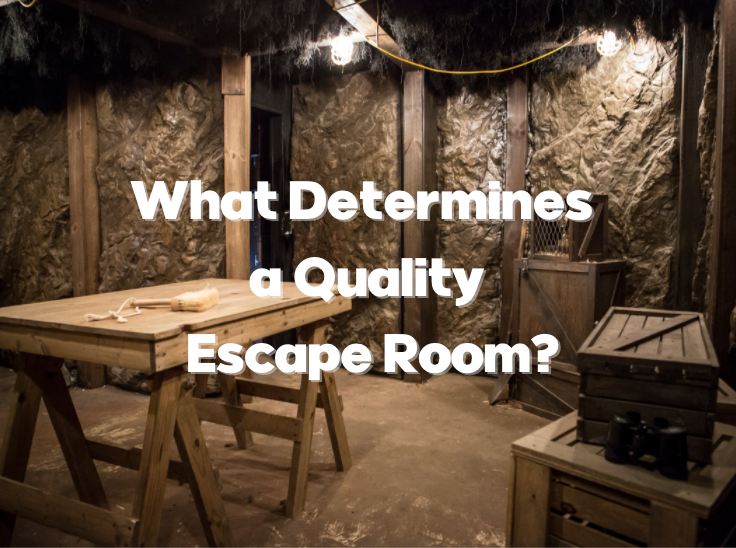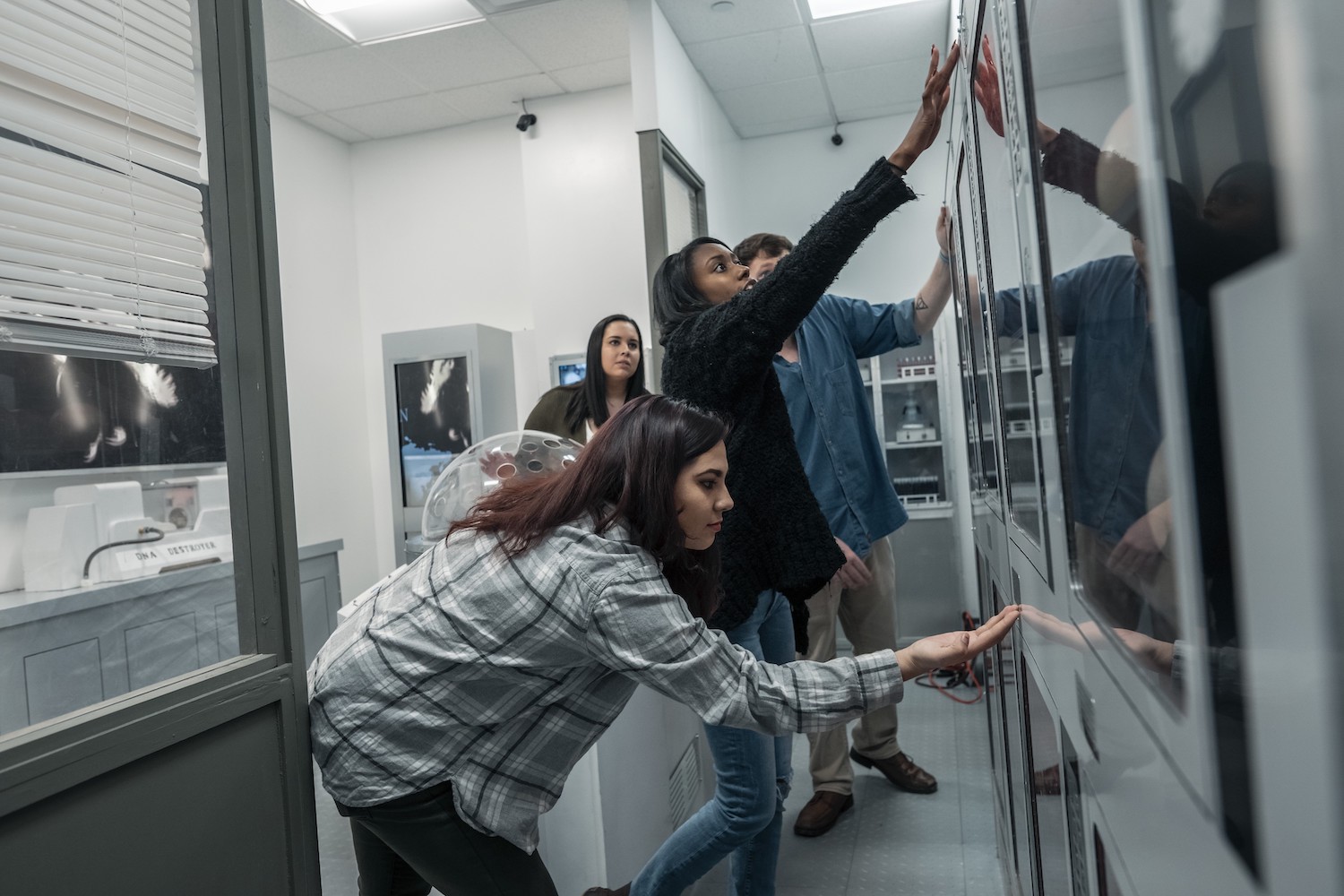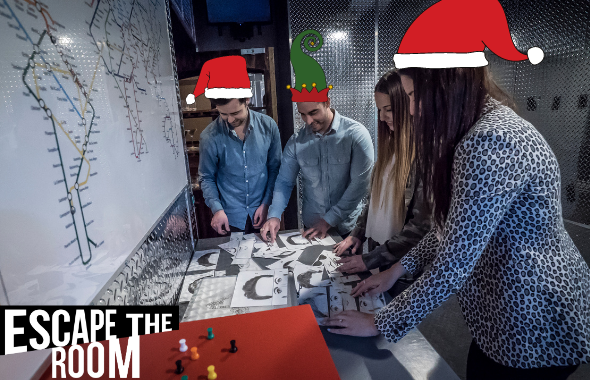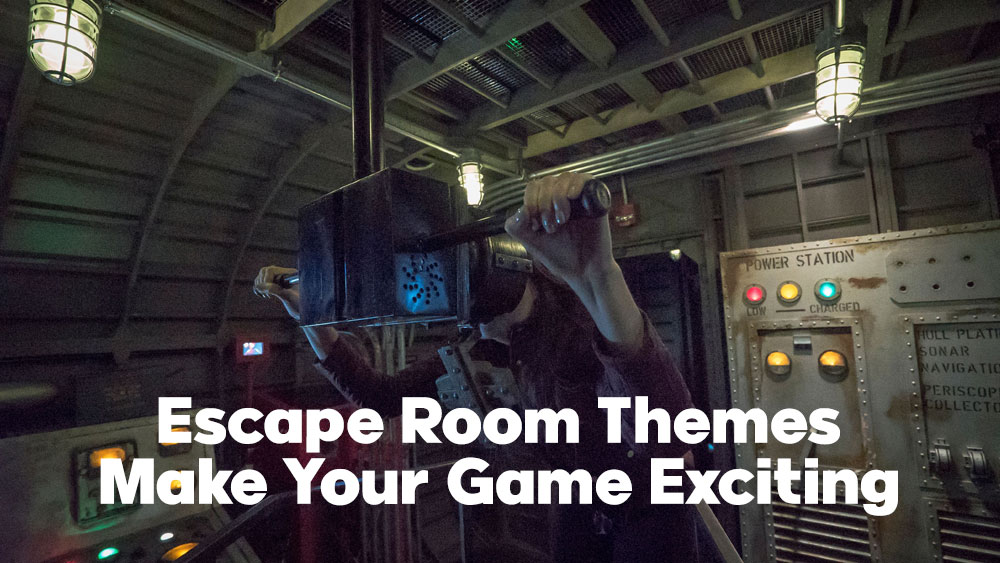Escape Room is an exciting, fun way to experience a high-energy, fast-paced game with friends, family members, co-workers, and loved ones. As an alternative to a standard dinner and movie night, Escape Rooms are a great way to come together and explore an evening out as you’ve never experienced before!
If you’ve never been to an Escape Room, you are in for a treat! Escape the Room is a 60-minute series of puzzles, riddles, and clues. For 60-minutes you will attempt to break out of your locked room with plenty of time to spare, or not!
Each solved puzzle builds on the next and becomes increasingly harder as time progresses. There will be twists and turns along the way, and teamwork is key in any Escape Room scenario, no matter which experience you choose!
Escape Room puzzles are all different as you move from one to the next. While there are all different types of puzzles, there are common puzzle themes you will come across, although they might show up slightly different. So, what are some escape room ideas you can expect in an Escape the Room scenario? This article will go over what you can expect in an Escape the Room experience (without giving away the clues) and set you up for a successful day or evening out at Escape the Room!
Part 1: Common Puzzle Scenarios
There are common Escape the Room puzzle examples that you will find patterns within, and these scenarios are repeated in many different rooms. Sometimes they will be as obvious as recognizing a pattern while others are tougher and require a keen sense of sight to find hidden clues inside objects.
Just like any experience, you will be solving puzzles that you’ve probably seen before. While we won’t give away any specific clues, you can expect to see similar puzzle scenarios from an Escape the Room experience. The trick is to find the right solution that works for you and your group using leadership, communication, outside the box thinking, and a whole lot of fun.
To help you along the way, below we have listed 6 Escape the Room deas you can reference when it comes time for you to break out of the room and have fun with your group. If nothing else, these clues and tips will give you a bit of insight into the types of puzzles you will come across during your Escape the Room experience and set you and your group up for complete success.
#1 Recognizing patterns in numbers and pictures
Any great puzzle has a pattern or code that needs to be broken, and this is a common puzzle that you might find in an Escape the Room experience. There are SO many different ways patterns can show up, making this easy conceptually but can be discreetly and expertly hidden in an Escape the Room scenario.
What does this look like? Recognizing patterns in numbers can result in inputting the numbers into a padlock, combination lock, or design. Pictures can be depicted in the same way. Which picture is different? Which picture doesn’t match the group?
How do you crack this type of puzzle? For this particular method, your best bet is to get to counting. For example, you might have a picture with ten flowers. If this is all you are left with no other portions to the puzzle, look around the room for the same or a similar photo. If you recognize a pattern in numbers, you may need to input the numbers into the padlock or lockbox to find out what our next puzzle is or how to advance.
#2 Crack the Code
Decrypt messages, search for symbols, and decipher the text in a puzzle that will make your head spin and require teamwork to find the pattern or solution. Codes, messages, and ciphers are all common puzzles you will likely find in an Escape the Room experience. Alongside symbols and code, another common code is morse code which can be relayed in flashing lights, taps, sounds, and more. You will need to be keen on recognizing all sorts or morse code from different sources.
#3 Highlighting clues, patterns, and discrepancies in the text
It is highly probable that you and your group will find a passage of text, a page from a book, pamphlet, or scroll that needs to be solved. Since you are recognizing patterns, codes, or searching for something specific, the following tools will come in very handy:
- Highlighter: Used for highlighting words, phrases or letters within a passage, page, or book.
- Hole punched sheet: Look for clues inside the clue, breaks in the page, or a specific code embedded in a page while looking through a hole punched paper. You might just find the secret message!
- Search and seek: Looking for a particular image or clue within a text? Keep deciphering the code and send someone else to look for the clue.
- Recognize patterns: Search for repetition within a text. Letters, numbers, words, phrases, etc.
- Use a glowstick, blacklight, or a certain type of ink to find hidden words, phrases, or underlined clues within a text.
#4 Glow sticks, blacklights, and invisible message retrievers
As mentioned above, you might come across a piece of paper, passage, or textbook that seemingly looks “normal,” or at least it does to the naked eye.
For puzzles like this, you will want to use handy tools like glow sticks, blacklights, or a tool that will show you any possible invisible ink that has been planted into your puzzle. You may be provided with tools like a blacklight marker, blacklight paint, or another tool, so make sure you utilize what you have been provided with!
PRO TIP: Still can’t see the clue? Put on an extra coat of blacklight paint or ink!
#5 The Manhunt is ON
Yes, hide and seek is a thing in Escape the Room puzzles, only you likely won’t be looking for another human being, but rather you are searching to find a missing or hidden object or clue. Most advanced Escape the Room participants will tell you that in almost every Escape the Room game there is a segment, portion, or puzzle that is solely dedicated to searching for items.
You don’t want to look in just any space. These tricky puzzles will require you to look in places you might normally overlook. Cracks, crevices, locked boxes, pockets, inside the pages of a book, inside drawers, pillars, and wedged in floorboards are not off limits! Again, you will need to get creative and look for outside the box places for a clue or object to be hidden.
#6 Play a long game
What exactly does this mean? Simply, there will be times where you have retrieved an item, found a clue, and you might have absolutely no idea where it goes or what you should do with it. In some puzzle cases, you will want to hold onto the clue so it unlocks a portion of another puzzle steps ahead of where it was originally found. Play a long game and don’t give up or cast aside the clue as irrelevant! You never know what might pop up around the corner! Whatever you choose to play, your Escape the Room puzzle experience will be an evening or day-date you’ll never forget! Have questions? Give us a call! Our customer service representatives are here to answer your questions or book your next event!





